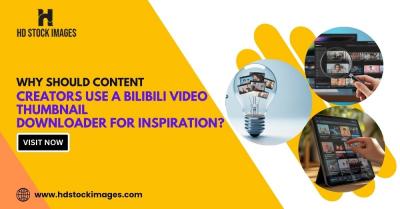Introduction to Imago Images in Advertising

Imago images are pivotal in shaping the visual narrative of advertising, especially in the automotive industry. These images encapsulate not just the product, but also the emotions and lifestyle associated with it. Think of those glossy pictures in car magazines or eye-catching billboards; they’re not just pretty photos—they're meticulously crafted imago images designed to captivate potential buyers. In a world flooded with options, how a vehicle is portrayed can make all the difference in attracting consumers.
Also Read This: How Imago Images Adds Depth and Meaning to Your Content Creation Strategy
Understanding the Importance of Visuals in Automotive Marketing

When it comes to automotive marketing, visuals are more than just decoration; they're essential storytelling tools. Let's break down why these visuals, particularly imago images, play a crucial role in the success of advertising campaigns:
- First Impressions Matter: A striking image can capture attention within seconds. For example, a sleek image of a new sports car speeding down a coastal road can evoke feelings of freedom and excitement, instantly connecting with a target audience.
- Building Brand Identity: Brands often use consistent visual themes across their campaigns. For instance, luxury car manufacturers like Mercedes-Benz focus on elegance and sophistication in their imagery, reinforcing their identity as premium brands.
- Influencing Consumer Decisions: Studies show that consumers are more likely to remember and respond to ads that utilize high-quality images. A compelling imago image can highlight unique features of a car, such as its interior design or advanced technology, swaying consumer preferences.
Moreover, consider how imago images fit into the broader marketing strategy. They are often utilized in:
| Platform | Purpose |
|---|---|
| Social Media | Engagement and shares, increasing brand visibility. |
| Websites | Enhancing the user experience by showcasing vehicles in action. |
| Print Media | Creating lasting impressions through physical copies of advertisements. |
In essence, the right imago images can evoke emotions, tell compelling stories, and ultimately influence buying decisions. So, the next time you see a stunning automotive ad, remember the thought and strategy behind those visuals—they're doing more than just showcasing a car; they're crafting a narrative that connects with you on a deeper level.
Also Read This: Posting Shutterstock Images on Instagram: Understanding Copyright and Usage Policies
3. Types of Imago Images Used in Automotive Campaigns
When it comes to automotive advertising, the visual representation of a vehicle can make or break a campaign. Imago images play a crucial role in delivering the right message and emotion to potential buyers. Here are some common types of imago images that are frequently employed in automotive campaigns:
- Hero Shots: These are stunning, high-quality images that showcase the vehicle in a dramatic setting. Think of a sleek car parked against a breathtaking sunset or speeding down a winding road. Hero shots capture attention and make viewers dream about the driving experience.
- Detail Shots: These images focus on specific features of the car, such as the interior design, dashboard, or unique exterior elements. Detail shots are essential for highlighting what sets a car apart from its competitors, often showcasing luxurious materials or cutting-edge technology.
- Action Shots: These dynamic images show the vehicle in motion—whether it's navigating off-road terrain, gliding through city streets, or taking on a racetrack. Action shots convey the vehicle's performance and capabilities, stirring excitement in potential customers.
- Lifestyle Images: These pictures depict people interacting with the vehicle in various settings, emphasizing how it fits into the owner's lifestyle. For instance, a family loading gear into an SUV for a weekend getaway or a young professional commuting in a stylish sedan highlights the vehicle's practicality and appeal.
- Comparison Images: These visuals show side-by-side comparisons of different models or brands, helping consumers make informed decisions. They can highlight features, pricing, and other vital factors that influence purchasing choices.
By using a combination of these imago images, automotive brands can create a compelling narrative that resonates with their target audience, effectively showcasing the vehicles not just as products, but as essential parts of an aspirational lifestyle.
Also Read This: Creating Engaging Ad Campaigns with Imago Images
4. How Imago Images Enhance Brand Identity
Brand identity is all about how a company is perceived in the eyes of the consumer. In the automotive industry, imago images play a pivotal role in shaping that perception. Here’s how they enhance brand identity:
- Visual Storytelling: Imago images allow brands to tell a story about their vehicles. For example, if a brand emphasizes adventure, their images will likely feature rugged terrains and outdoor settings, appealing to thrill-seekers. This storytelling fosters a deeper emotional connection with the audience.
- Consistency in Branding: Using a consistent style, such as color palettes, image types, and photography techniques, helps reinforce brand recognition. For instance, a luxury car brand may consistently use elegant, soft lighting and sophisticated settings to convey a sense of exclusivity and refinement.
- Target Audience Engagement: The right imago images can attract and engage specific demographics. A campaign targeting younger drivers might feature vibrant urban settings and modern design elements, while one aimed at families may focus on safety features and spacious interiors.
- Symbolism and Emotion: Images can evoke feelings and associations—like freedom, adventure, or safety. Brands often use specific imago visuals to connect with these emotions, reinforcing their core values. For instance, a brand might use images of families enjoying road trips to symbolize safety and togetherness.
- Innovation and Technology Showcase: As automotive technology evolves, brands can use imago images to highlight innovative features like electric engines or advanced safety systems. This not only informs consumers but also positions the brand as a forward-thinking leader in the industry.
In essence, imago images are more than just pretty pictures; they are powerful tools that shape perceptions and build brand loyalty in the competitive automotive market. By carefully curating the visuals they use, brands can create a distinctive identity that resonates with their audience and stands out from the competition.
Also Read This: Shutterstock Contributor Earnings: Understanding How Much You Can Make
5. Case Studies of Successful Automotive Advertising Using Imago Images
When it comes to automotive advertising, using imago images can transform the way a car brand connects with its audience. Let’s dive into a couple of remarkable case studies that highlight how imago images have played a pivotal role in successful campaigns.
Case Study 1: BMW's "The Ultimate Driving Machine"
BMW’s long-standing slogan, “The Ultimate Driving Machine,” resonates deeply with car enthusiasts and casual drivers alike. In their recent campaign, they integrated stunning imago images that showcased their vehicles in breathtaking landscapes. The visuals emphasized not just the cars but also the exhilarating lifestyle they represent.
- Visual Focus: The ads featured dynamic shots of BMW models racing along scenic coastlines and winding mountain roads, evoking feelings of freedom and adventure.
- Emotional Connection: By using high-quality imago images, BMW successfully tapped into the emotions of their target audience, making the cars not just a means of transport but a symbol of aspiration.
As a result, BMW reported a significant increase in engagement on their social media platforms, with many users sharing photos and stories of their own driving experiences. This interactive approach created a community around the brand, further enhancing loyalty and connection.
Case Study 2: Ford's Electric Vehicle Campaign
With the growing interest in electric vehicles (EVs), Ford launched a campaign for their new electric range, including the Mustang Mach-E. They utilized vibrant imago images that captured the innovation and sustainability of their EVs. The visuals were not just about the cars; they depicted a cleaner, greener future.
- Innovative Imagery: The imago images showcased the Mustang Mach-E in urban settings, emphasizing its modern design and eco-friendly features.
- Targeting Eco-Conscious Consumers: By aligning their visuals with themes of sustainability, Ford successfully resonated with environmentally conscious consumers.
This campaign led to a remarkable uptick in inquiries and test drives, demonstrating the power of compelling imagery in shifting consumer perceptions about electric vehicles.
6. Best Practices for Integrating Imago Images into Campaigns
Integrating imago images into your automotive advertising campaign is not just about choosing pretty pictures; it requires strategy and thoughtfulness. Here are some best practices to ensure your visual storytelling hits the mark:
- Know Your Audience: Understand who your target audience is. Are they luxury car buyers or budget-conscious families? Tailor your imago images to resonate with their lifestyles and values.
- Focus on Authenticity: Use real-life scenarios in your images. For instance, instead of staged shots, consider using photos of families enjoying a road trip in your SUV. Authenticity fosters trust.
- Highlight Key Features: Use imago images to showcase important features of the vehicle. For example, if your car has advanced safety features, consider images that demonstrate these in action.
- Create a Consistent Visual Theme: Ensure that your imago images align with your brand’s overall aesthetic. Consistency helps in building brand recognition and loyalty.
- Utilize Social Media Effectively: Share your imago images across various platforms. Instagram, for instance, is perfect for visually-driven content. Consider interactive formats like stories or reels to engage your audience further.
By following these best practices, you can effectively integrate imago images into your automotive advertising campaigns, creating visuals that not only attract attention but also drive results. Remember, in the world of automotive advertising, the right image can tell a thousand stories!
 admin
admin








